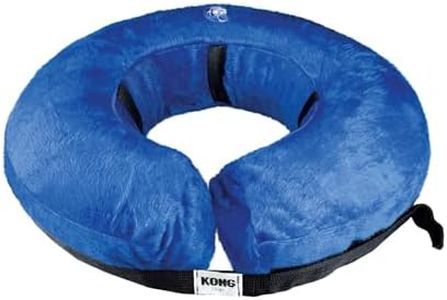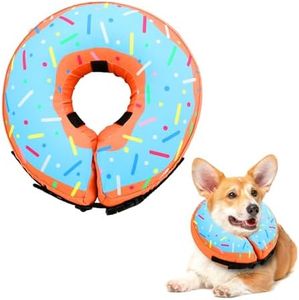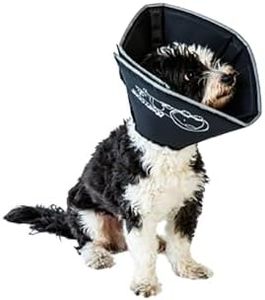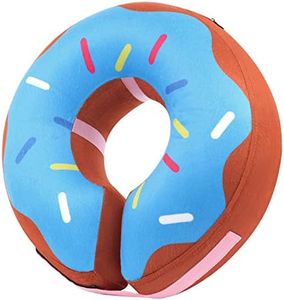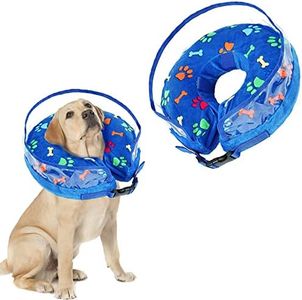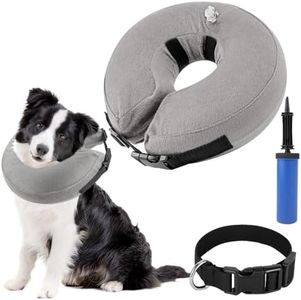We Use CookiesWe use cookies to enhance the security, performance,
functionality and for analytical and promotional activities. By continuing to browse this site you
are agreeing to our privacy policy
10 Best Dog Cones
From leading brands and best sellers available on the web.Buying Guide for the Best Dog Cones
Choosing the right dog cone, also known as an Elizabethan collar or e-collar, can make a huge difference in your pet’s comfort and recovery if they’ve had surgery, an injury, or are dealing with skin irritations. The main goal is to prevent your dog from licking or biting at a wound or surgical site, but you want to balance that protection with your dog's comfort and ability to do everyday things like eat, sleep, and move around. By paying attention to a few key features, you can help your dog recover comfortably and safely.Size and FitSize and fit refer to the overall dimensions of the cone and how well it matches your dog's neck and body size. This is crucial because a collar that's too large can be uncomfortable or heavy for your dog, while one that's too small won't do its job of preventing licking or biting. Typically, cones are measured by neck circumference and length from the neck to the end of the cone. Smaller cones are best for small breeds or puppies, while larger, longer cones suit big dogs or those with long snouts. Always measure your dog's neck and consider their mobility and habits—choose a cone that allows them to eat and drink but still blocks their access to wounds.
MaterialThe material of a dog cone can range from rigid plastic to softer fabrics or inflatable options. Rigid plastic cones are durable and offer maximum protection, but some dogs find them uncomfortable. Soft fabric cones provide more comfort and flexibility but may be less effective with particularly persistent or agile dogs. Inflatable collars are like travel pillows and offer the most comfort, but are only suitable for certain injury locations. Your choice should consider your dog’s temperament and the nature of their injury—gentler dogs with less need to be tightly restricted may do well with soft or inflatable cones, while determined chewers or reachers typically need something sturdier.
Fastening MechanismThe fastening mechanism is how the cone stays attached around your dog’s neck, with options like Velcro, plastic snaps, or even tie strings. A secure but easy-to-use closure is important both for your dog's safety and your own convenience when putting it on or taking it off. Velcro fastenings are adjustable and quick, but sometimes noisy or less secure for strong dogs. Snaps or buckle styles may be sturdier. If your dog is particularly wiggly or strong, look for a cone with a strong and secure attachment method, but if your pet is calm, an adjustable Velcro might be all you need.
Visibility and WeightVisibility and weight influence your dog’s comfort and ability to move around. A cone that's too heavy can tire your pet or make them less likely to eat or drink, while one that's too light might not do its job. Transparent cones help your dog see around, reducing anxiety and bumping into things, while opaque or colored cones may limit vision. If your dog is skittish or easily anxious, look for lighter and clearer options, while bigger or more robust dogs might not mind a heavier, sturdier collar.
Length and DepthLength and depth refer to how far the cone extends beyond your dog's nose and how much of their head and neck is covered. The right length ensures your dog cannot reach their injury but can still eat, drink, and sleep. For facial wounds or areas close to the front, a shorter cone might be fine. But for injuries lower on the body or tail, longer, deeper cones are needed. Consider where your pet’s wound is—if it’s on their body or tail, a longer cone will be needed, while for head or ear wounds, a shorter one may be enough.
